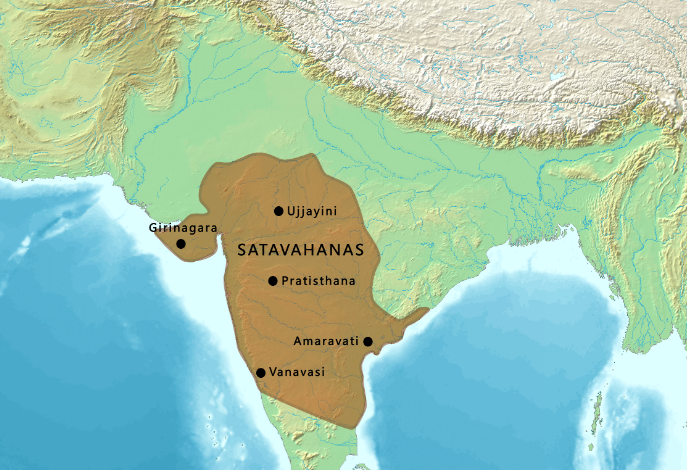Learn About One Of The Most Significant Empires In Indian History, The Satavahana Dynasty At Gunpoint, Passengers Aboard The Delhi-Kolkata Duronto Express Were Robbed In Bihar

According to certain interpretations based on the Puranas (old religious and mythological books), the Satavahana dynasty was an Indian family that belonged to the Andhra jati (tribe) and was the first Deccanese dynasty to establish an empire in daksinapatha or the southern area. The Satavahanas controlled remote regions of central and western India at their zenith.
The Satavahana supremacy can be traced back to the late 1st century BCE on the basis of Puranic evidence, however, some authorities date the family back to the third century BCE. Initially, just a few parts of the western Deccan were under Satavahana dominion. A number of caves, including those at Nanaghat, Nashik, Karli, and Kanheri, include inscriptions that honor the earliest kings Simuka, Krishna, and Shatakarni I.
A nearly constant string of battles between the two Indian kingdoms stemmed from the proximity of the western Kshatrapas and the accessibility of the western coastal ports, which thrived during this period of Indo-Roman trade, from the early Satavahana kingdom. The invasion of Nashik and other parts of the western Deccan by Kshatrapa Nahapana symbolizes the initial phase of this conflict. The greatest king of the line, Gautamiputra Shatakarni (reigned between 106 and 130 CE), restored Satavahana’s sovereignty. From Rajasthan in the northwest to Andhra in the southeast and from Gujarat in the west to Kalinga in the east, his conquests covered a considerable geographic area. The Kshatrapas took back the majority of these territories from the Satavahanas before 150 and defeated them twice.
Vashisthiputra Pulumavi, Gautamiputra’s son, governed from the west (c. 130–159). The trend appears to have been toward east and northeast expansion. Vashisthiputra Pulumavi’s inscriptions and coins have also been discovered in Andhra, and coins during his reign under Shivashri Shatakarni (c. 159–166) have been discovered in the Krishna and Godavari regions. Additionally, the Krishna and Godavari rivers, the Chanda region of Madhya Pradesh, Berar, the northern Konkan, and Saurashtra are also included in the distribution area of Shri Yajna Shatakarni’s (reigned c. 174–203) regional coinage.
The Satavahana dynasty’s final significant figure was Shri Yajna. He defeated the Kshatrapas, but his successors, who are mostly known from Puranic genealogical reports and coins, ruled over a relatively small territory.
Later numismatic offerings’ local nature and distribution pattern reveal the Satavahana empire’s subsequent disintegration. The Iksvakus and Pallavas were the first civilizations to control the Andhra region. New local powers like the Cutus, the Abhiras, and the Kurus appeared in various parts of the western Deccan. In the early fourth century, the Vakatakas were a powerful political force in the Berar region. By this time, the Satavahana empire had been completely destroyed.
The Satavahanas marked the start of the real historical era in this region, despite the accomplishments of the northern Mauryas in the Deccan in the fourth and third centuries BCE. Although there are no definite signs that a centralized administrative organization arose, the empire did introduce a complex system of coinage. The zenith of the Indo-Roman trade occurred during this time, and the material wealth that followed is evident in the lavish patronage of the Buddhist and Brahmanical groups that are listed in early inscriptions.
News Mania Desk






